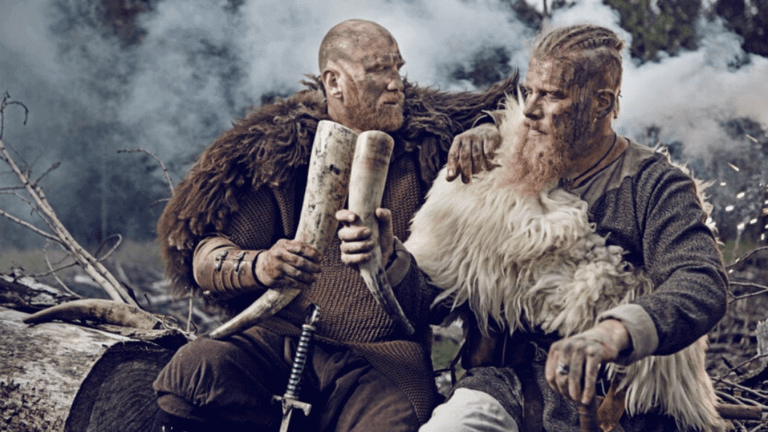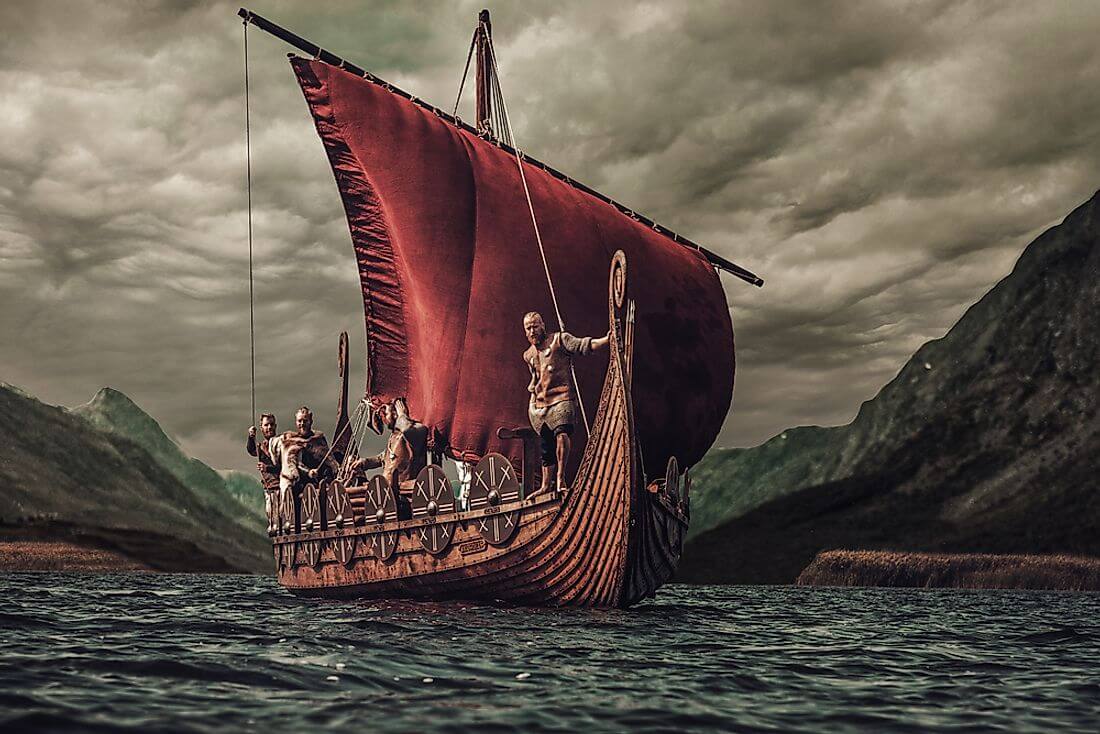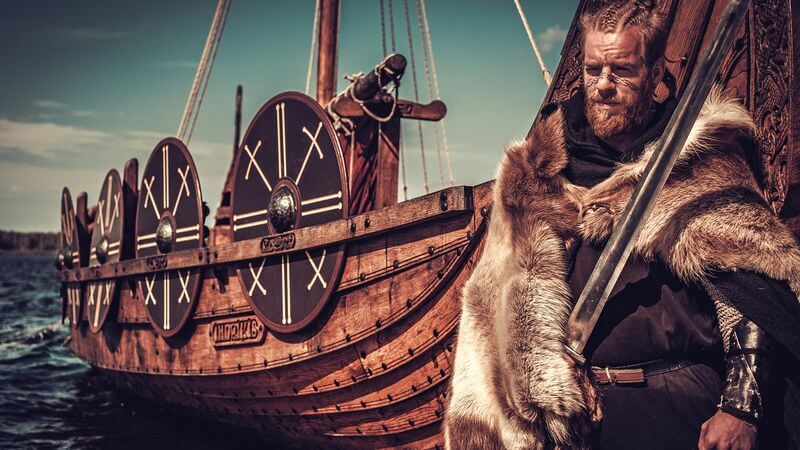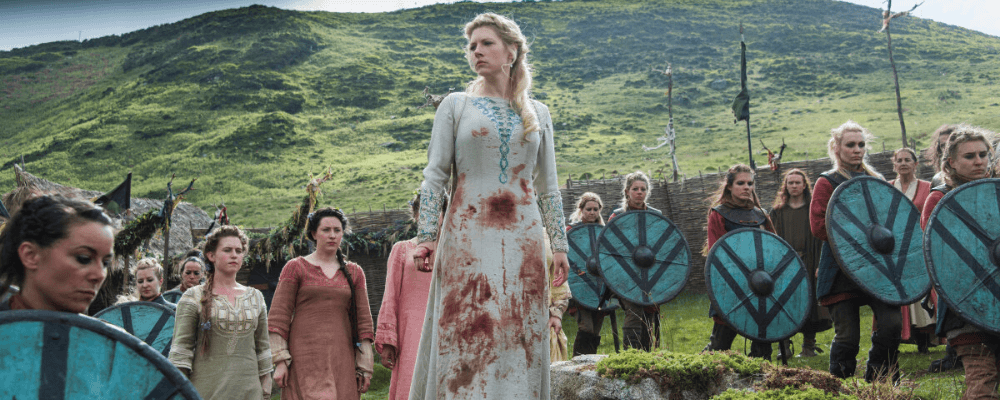Norway’s Great Vikings heritage is strong, with many attractions, museums, tours, and lively villages.
What would today’s modern technology have looked like a thousand years ago? A fast Viking ship, perhaps? These advanced ships helped build cultural unity in Europe and played a crucial role in uniting the Norse race into one state. The Vikings left their mark on Northern Europe forever, and many remnants of their culture can turn your vacation into an adventure.
Viking history and culture

The Viking Age began in 793 with an attack on the monastery of Lindisfarne in England, known as the Viking invasion. The event that marked the end of their glory days was the assassination of King Harald Hardrada at the Battle of Stamford Bridge in 1066.
Warfare, looting, settlement, and trade brought the Vikings to many places in the known world and beyond. At first, only a few Viking sailors survived the disastrous voyage, but the ships grew over time, and soon there were hundreds of known boats.
Such as the length of a ship.
They crossed the Baltic Sea and down the Russian coast to the Black Sea and the Caspian Sea to Byzantium and the Caliphate of Baghdad. The Vikings were also the first Europeans to reach Greenland and North America. The Viking explorer Leif Eiriksson reached the shores of North America in about 1000 years, 500 years before Christopher Columbus.
Viking Remedies

The Vikings founded many cities and settlements, including Dublin in Ireland and the Normandy region of France. Dublin has been considered an important city for over three centuries. Between 879 and 920, the Vikings conquered Iceland, which in turn became a springboard for the conquest of Greenland. The remains of a Viking settlement at L’Anse aux Meadows in Newfoundland have been carbon-dated to about 1000 years.
Viking warriors

How can a small group of geographically dispersed people conquer many territories? The Norwegian Vikings are known for their bold and deadly vision, which made them dangerous. The raiding party seems to have had an incredible ability to prevent casualties, whether in land battles or dangerous sea voyages. Although the number of soldiers sometimes increased compared to the number of Vikings, this did not reduce their thirst for conquest and discovery, which continued for about 250 years.
Also Visit, John Hartman, Great Drummer Dies at 72
Peaceful merchants and drunkards

The Vikings were known for their relentless looting, and for a good reason. At the same time, many live in peace as traders and farmers, and most travel depends on trade agreements. Those who stayed at home supported their families through simple agricultural work. Their daily lives may have been complex and demanding but not joyous. The most famous Viking drink was mead (mjød in Norwegian), an alcoholic beer-like infusion sweetened with honey.
The end of the Viking Age

Explorers brought their cultural identity to the European continent, importing culture, language, and knowledge from abroad. By 1100, the Vikings were in decline due to internal strife and resistance from other European nations, who learned the painful lesson they needed to protect themselves from an attack by building walls.
Viking ship

On a good day, sailors can go as fast as 15 to 17 knots.
The speed of the Viking ships is the key to understanding how these heroes achieved sudden and surprising energy. Their innovation at sea connected northern and southern Europe, which strongly influenced the continent.
New ship design

Other cultures adopted the Viking’s elegant ship designs, called Longships, and influenced shipbuilding for centuries. Briefly explained, this process involves stacking oak logs that have been folded together and protected with a layer of wool and sometimes animal hair.
The secret of this fast Drakkar is its narrow length, with a small stable keel. Light enough to carry, it is designed for quick and easy navigation in shallow water. The size of the trip is twofold, allowing it to change direction without the need to turn. This is a significant advantage in an ocean full of hidden icebergs and sea ice.
A long boat has a boat that runs almost the length of the boat, and other versions add a craft. Multi-purpose boat Ships are used for looting and other raids, as well as for peaceful trade. Many Vikings died in battle on the European continent. In 876, about 4,000 men and 120 ships were lost in a storm off the south coast of England.
When famous Vikings died, they were buried in a hearse with their clothes, jewelry, and even their horses and cows. One of the essential cemeteries in Scandinavia is the Oseberg burial mound. In 834, the queen of Oseberg was buried in a large ship, her possessions. The body also contained the body of a second woman whose origin is unknown.
Viking Ship Museum in Oslo

Here, you can get close to the best Viking ships in the world and breathe in the smell of tar from the Oseberg Ship, Gokstad Ship, and Tune Ship, which remain in the air more than 1,000 years later.
Female power.
What role did women play in Viking history?

Women would have had a stronger position in Viking society than in other parts of Europe. They usually have the right to divorce, and if their husband or wife dies, they inherit his land and keep his property. They received legal protection against sexual harassment. A woman is respected as the farm manager in her husband’s absence, which she can be for a long time. Today’s interest in Viking culture is not only in their image as unstoppable sea warriors but also in their way of life and their role in developing new and modern societies.
The Vikings were famous warriors. Their famous ships could be towed very quickly, which meant that the Vikings did not need a harbor. This made the Viking attack sudden, unpredictable, and almost impossible to defend against. Beginning with the attack on the British monastery of Lindis Farne in 793 AD and continuing for more than 200 years, the mighty Norsemen have left their mark on history.
But, there was more to Viking culture than looting and violence. In the original Viking country on the west coast of Norway, today, some people live according to the principles of their ancestors, albeit the best.
The modern Viking king

Thousands of Norwegians are now working to discover the precious and forgotten parts of their Viking heritage. Hundreds of people gather at the Viking markets of Gudvangen and Avaldsnes – the historic home of the famous King Harald Fairhair – to relive Viking life and learn about Viking Age art and trade.
In Gudvangen, the Vikings had an undisputed king: Georg Olafr Reydarson Hansen. For almost 20 years, he worked to establish the permanent Viking city Njardarheimr, which closed in 2017.
The town was built in a beautiful location in the beautiful Nærøyfjord. “It is excellent in form and built using traditional methods. A total of 18 houses were built here, and hundreds of liters of tar, linseed oil, and cow’s blood were used. “The president’s room was painted green, which was the most expensive pigment you could get at the time,” said Hansen. According to him, there are about 40 Viking reenactment groups in Norway, with between 2,000 and 4,000 active members. Worldwide, there are ten times more.
“We have 400 Vikings in Gudvangen. In the market, we have children learning traditional skills and trade. A 15-year-old boy became a carpenter, and a 15-year-old girl became a weaver. When the old people see this, they think it’s awesome, and they join in,” says Hansen, brushing his beard with an authentic Viking comb he wears on his hip.
In addition to the comb, cape, and coat, it shows us a real sword. “It’s made of thousands of steel, bent over and over again until it’s strong and sharp,” he says. Of the 3,500 Viking swords found in Norway, only about 50 have the same edge as his. For him, none of these Vikings are gimmicks, far from there.
“When I wear a Viking suit, I’m not trying to be someone I’m not, but to emphasize who I am,” he says. But it is not like they reject the modern world. “We watch movies on TV, and heavy metal is modern Viking music. The old and the new must join hands,” says Hansen, adding, “We are the people of the new era looking for the principles of the old generation.

